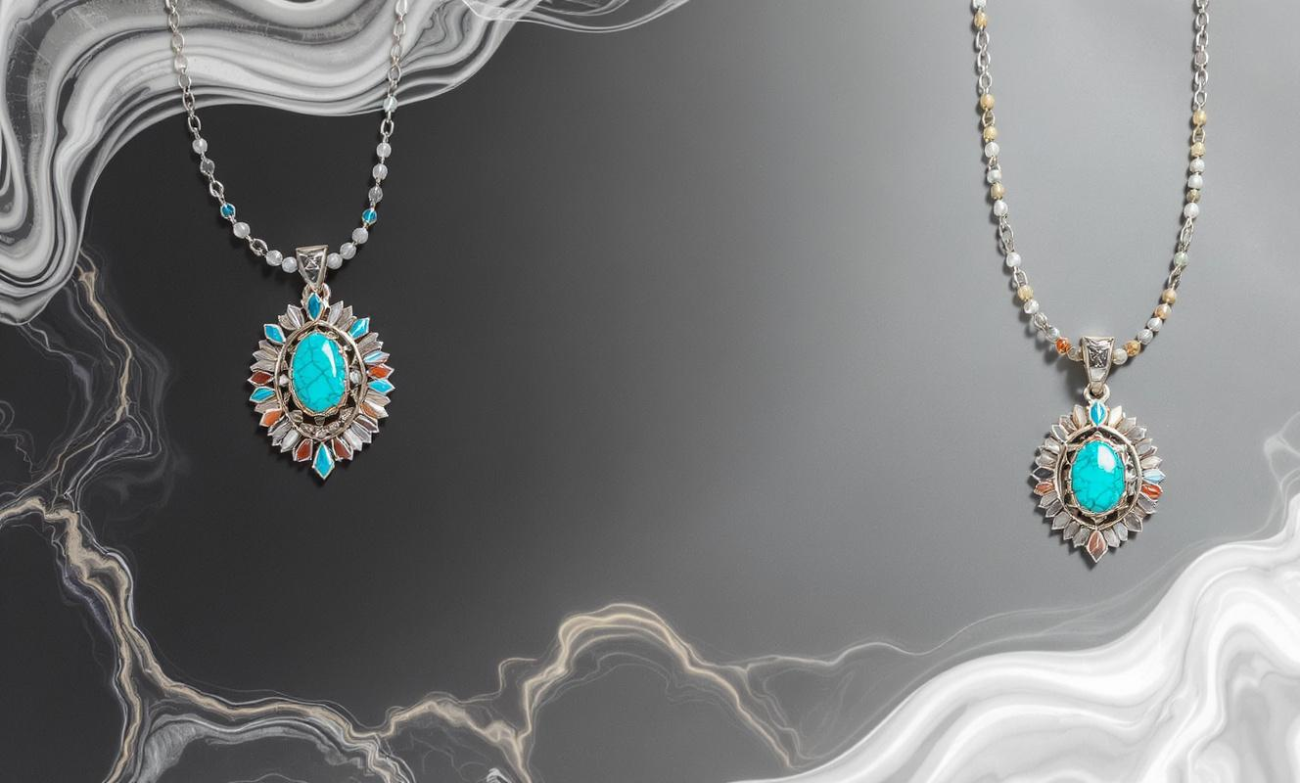Blog
Jewelry is one of the oldest forms of personal adornment, and its significance goes far beyond aesthetic beauty. Across cultures, jewelry has been used to express identity, status, and spiritual beliefs. Whether it was crafted from precious metals, stones, or beads, jewelry has served as a symbol of power, love, and connection to the divine.
At NiceJewelry, we recognize the importance of cultural heritage in jewelry. In this article, we’ll explore the history of jewelry across different cultures and how it has evolved over the centuries. From the ancient Egyptians to modern-day Tibetan traditions, we’ll take a closer look at how jewelry has played a crucial role in expressing values and showing wealth throughout history.
1. Jewelry in Ancient Egypt: Symbols of Status and Immortality
Ancient Egypt is perhaps the most famous for its luxurious jewelry and the symbolic meaning behind it. Jewelry was worn not only by the elite but also by pharaohs, priests, and the gods themselves. The Egyptians believed that jewelry had the power to protect and enhance the afterlife.
🔸 Significance
- Gold was highly revered in Egypt, symbolizing the sun and the gods. It was used in the crafting of necklaces, bracelets, rings, and headpieces for royalty.
- Gemstones, such as turquoise, lapis lazuli, and carved scarabs, were used for protection and good fortune.
- The Ankh symbol, often seen in jewelry, represented eternal life and was believed to bring immortality.
At NiceJewelry, we celebrate the rich Egyptian legacy with pieces inspired by their symbols of eternal life and spiritual significance.
2. Jewelry in Ancient Greece: A Symbol of Beauty and Gods
In Ancient Greece, jewelry was closely tied to mythology, beauty, and gods. The Greeks were known for their fine craftsmanship, creating pieces from gold, silver, and precious stones. Their jewelry was often symbolic, celebrating love, wisdom, and the divine.
🔸 Significance
- Gold wreaths and headbands were worn to symbolize wealth and power.
- Earrings and necklaces with motifs of goddesses like Athena, Aphrodite, and Hera were common, representing goddesses’ protection and beauty.
- Cameos and intaglios — carvings on gemstones — were often used to tell stories from Greek mythology.
Our collection at NiceJewelry embraces the mythological richness of ancient Greece with delicate gold pieces and gemstone designs that represent beauty and strength.
3. Jewelry in India: Spiritual and Cultural Significance
Jewelry in India has been a significant part of the culture for thousands of years. Indian jewelry is deeply intertwined with both spiritual beliefs and social status. It plays a role in everything from weddings to religious rituals.
🔸 Significance
- Gold and silver are used extensively in Indian jewelry, with intricate designs that symbolize prosperity, luck, and well-being.
- Gemstones like emeralds, rubies, and diamonds are believed to have healing properties and are often worn to enhance spiritual growth.
- Nose rings, bangles, and necklaces are part of the wedding tradition, each carrying symbolic significance for the bride’s new life and her connection to the divine.
At NiceJewelry, we offer designs inspired by traditional Indian craftsmanship, combining rich gold tones and vibrant gemstones that reflect the country’s cultural heritage.
4. Jewelry in Africa: Symbolism and Social Identity
In Africa, jewelry is a powerful symbol of social identity, tribal affiliation, and spirituality. From the beaded necklaces of the Maasai to the intricate metalwork of the Tuareg, African jewelry is as diverse as the continent itself.
🔸 Significance
- Beaded jewelry is common in African cultures and is used to express tribal identity and social status. Each bead color and arrangement can signify something unique, like wealth, marital status, or spiritual beliefs.
- Gold and silver are used by royal families or tribal leaders, symbolizing power and divinity.
- Adornments such as bracelets, anklets, and headdresses carry spiritual significance, often used in ceremonies and rituals.
At NiceJewelry, we bring the beauty of African jewelry traditions to life with bold beaded designs and tribal-inspired pieces that embody culture and heritage.
5. Jewelry in Asia: Emphasis on Balance and Harmony
In countries like China, Japan, and Tibet, jewelry plays a significant role in promoting spiritual harmony and balance. These cultures value simplicity and natural beauty, with a strong emphasis on feng shui (in Chinese culture) and yin-yang balance in Japanese traditions.
🔸 Significance
- Chinese jewelry often features jade, which is believed to bring good luck and protection. It is also associated with immortality and spiritual clarity.
- Tibetan jewelry often incorporates silver, turquoise, and amber, with spiritual symbols like the Om or lotus flower that symbolize protection and awakening.
- Japanese jewelry emphasizes simplicity and balance, with natural materials like wood, bone, and stone, often symbolizing a connection to nature and the spiritual realm.
At NiceJewelry, we offer Tibetan-inspired jewelry, jade pieces, and minimalist designs that promote spiritual well-being and balance.
6. Jewelry in Europe: Elegance and Prestige
In Europe, jewelry has long been associated with royalty, elegance, and prestige. From the crowns and tiaras of royalty to the intricate craftsmanship of the Renaissance, European jewelry has always been a symbol of wealth, power, and artistry.
🔸 Significance
- Diamond jewelry has been a symbol of wealth and status since the 18th century. The royalty and aristocracy often wore elaborate pieces with diamonds, emeralds, and rubies to signify power and dominance.
- Craftsmanship is highly valued, with goldsmiths and silversmiths creating intricate designs for the wealthy elite.
- Engagement rings, wedding bands, and family heirlooms often hold emotional significance in European cultures, symbolizing love and commitment.
At NiceJewelry, we create elegant European-inspired pieces that blend timeless luxury with cultural heritage.
Explore Jewelry Across Cultures at NiceJewelry
Jewelry has always been more than just an accessory — it’s a way to connect with history, culture, and spirituality. At NiceJewelry, we celebrate the diverse beauty of jewelry from across the globe, offering designs that reflect the heritage and craftsmanship of each culture.
Explore our collection today at https://nicejewelry.shop and find jewelry that speaks to the soul, culture, and beauty of different traditions.




